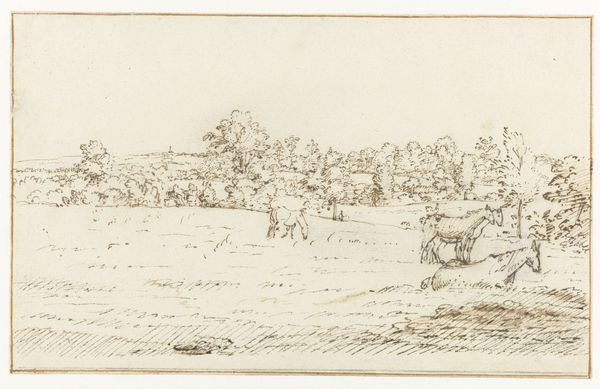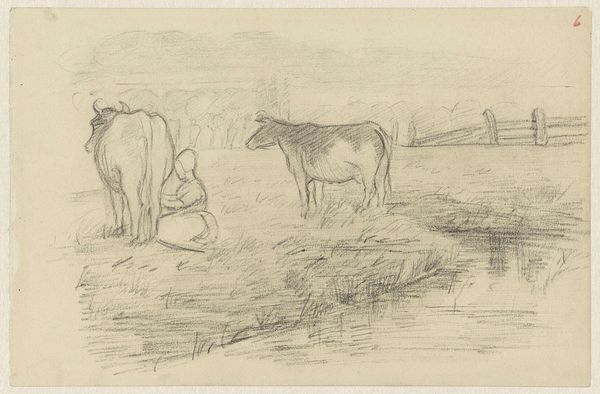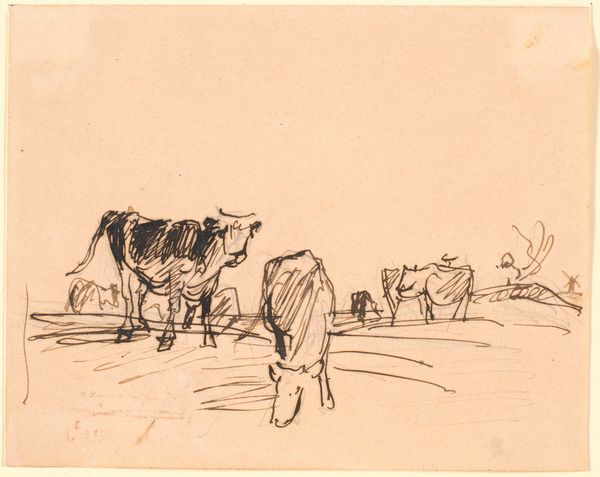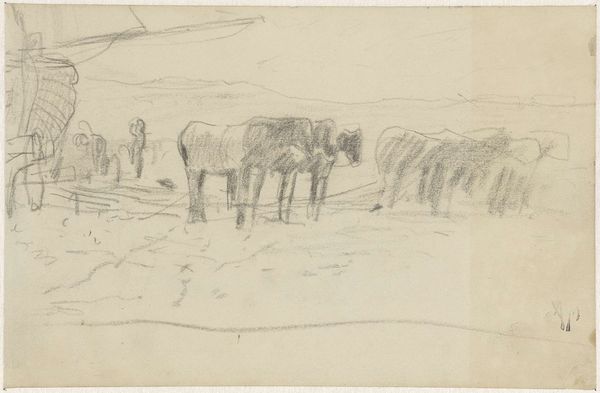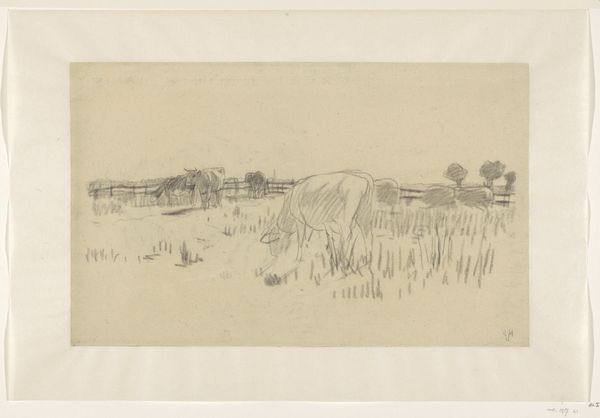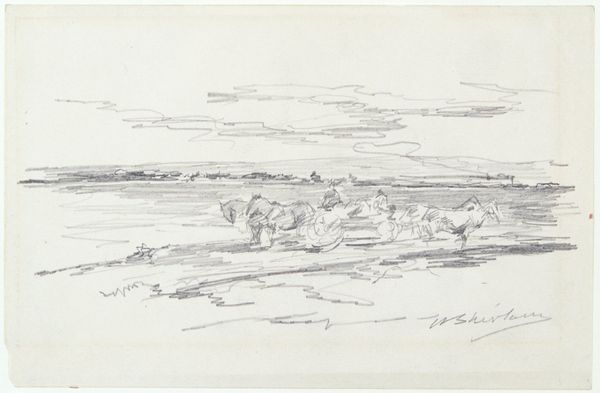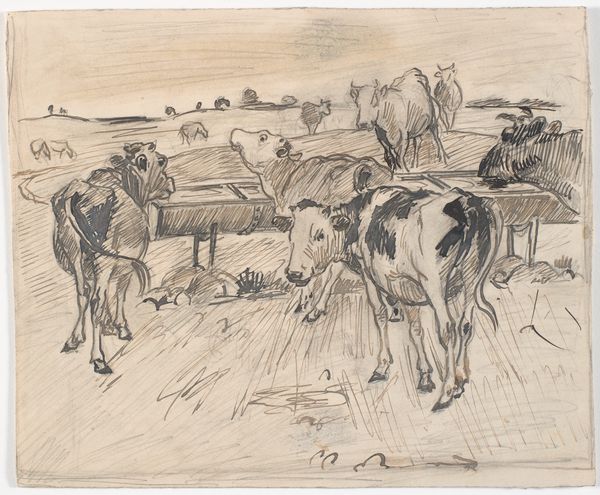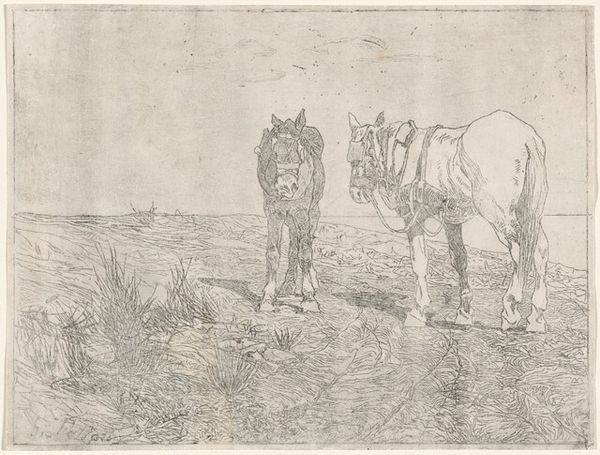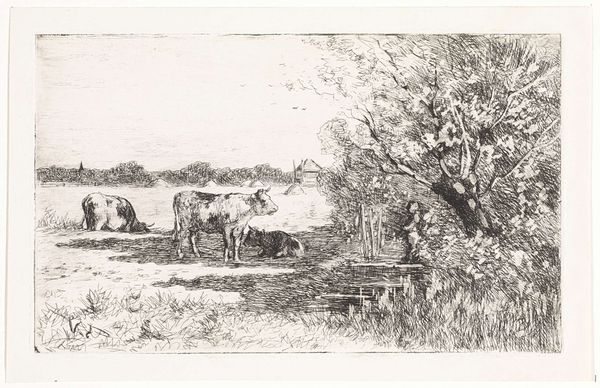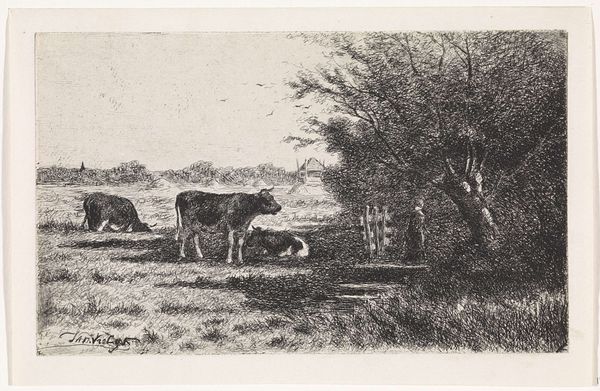
drawing, pencil, graphite
#
drawing
#
ink drawing
#
pen sketch
#
landscape
#
folk-art
#
pencil
#
graphite
#
genre-painting
#
realism
Dimensions: height 209 mm, width 345 mm
Copyright: Rijks Museum: Open Domain
Editor: This is "Weidelandschap met koeien" – or "Pasture Landscape with Cows" – a drawing by Guillaume Anne van der Brugghen, probably made sometime in the mid-to-late 19th century using graphite and ink. It has such a calm, pastoral feel, almost nostalgic. What do you see in this piece? Curator: I see a powerful engagement with the idealization of rural life that was prevalent in 19th-century Dutch art. Brugghen isn't just depicting cows in a field; he's participating in a broader cultural conversation about the role of the agrarian landscape in national identity. Notice how the composition guides our eye across the flat horizon line, reinforcing this idea of spacious, cultivated land. It speaks to the Romantic ideal of a harmonious relationship between humans and nature, a particularly charged concept during a period of rapid industrialization and urbanization. Editor: So, it's not just about cows, it's about… national identity? Curator: Exactly! These genre paintings often served as visual reminders of a simpler, perhaps idealized past, promoting certain values about the "authentic" Dutch character. Where do you think the artist positions the viewer in this constructed representation of Dutch authenticity? Editor: Maybe...outside it? Like we're looking in on an imagined reality? Curator: Precisely! Now, think about how such depictions could be used, then and even today. Who is this for, and what purpose might such imagery serve in shaping collective memory or cultural identity? Editor: I guess I hadn’t considered how something as simple as a drawing of cows could be so deeply embedded in socio-political narratives. That's fascinating. Curator: And important. Recognizing the power of imagery and the agendas behind seemingly innocent depictions is crucial to understanding the broader historical context of art. Editor: Definitely a new way to appreciate the role art can play. Thanks!
Comments
No comments
Be the first to comment and join the conversation on the ultimate creative platform.
